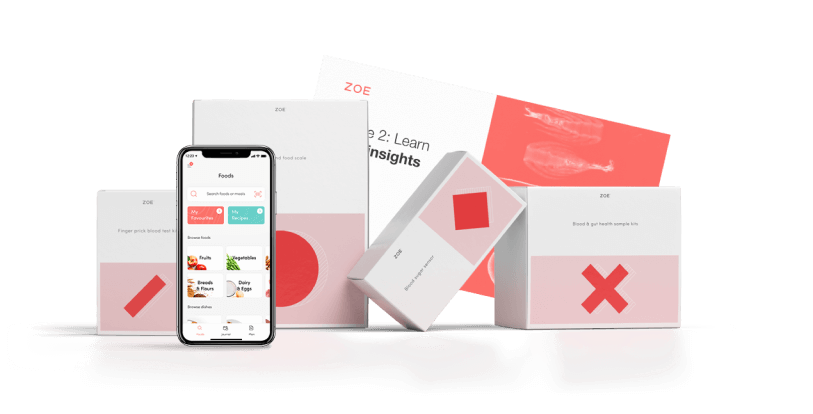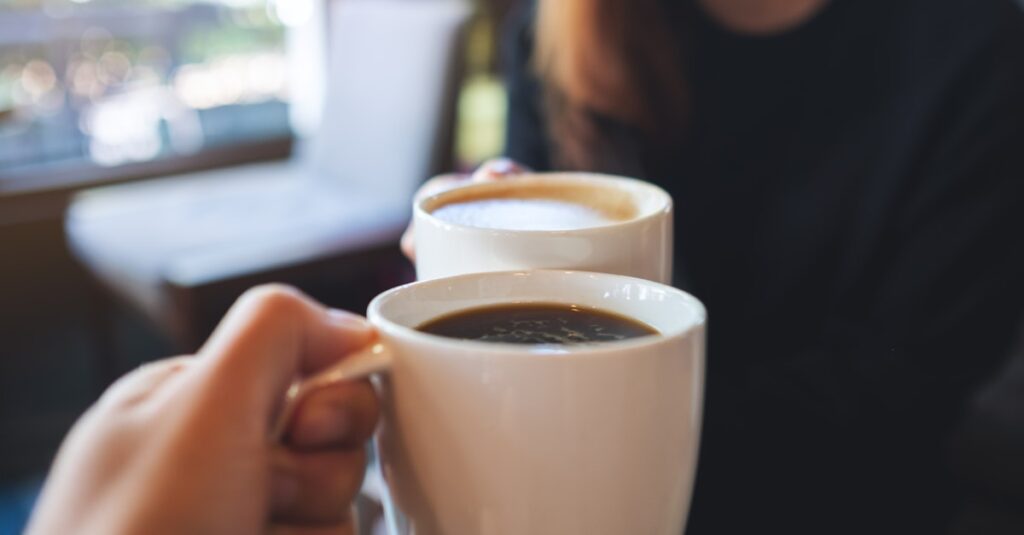Intermittent fasting involves alternating between periods of eating and fasting. But is all food and drink off limits during a fast? What about your morning cup of coffee or tea? And what exactly breaks a fast?
There are several different types of intermittent fasting (IF), and what’s allowed during a fast depends on which method you choose and what your goals are.
Generally speaking, while fasting with time-restricted intermittent eating, you don’t eat any food at all and only drink beverages with very few calories, such as water or unsweetened coffee and tea without milk.
When you’re not fasting, it’s important to eat a healthy and varied diet that’s good for your body.
Many people follow IF because they want to improve their health. During an extended fast, your body switches from burning sugar to burning fat for energy, and some scientists believe this may be beneficial.
At ZOE, we run the largest nutritional science research program of its kind, with over 10,000 participants so far.
Our studies show that how you respond to the foods you eat is unique to you. What works for another person isn’t necessarily the right approach for you.
With the ZOE program, you get personalized nutrition advice to help you find the best foods for your body.
Take our free quiz to learn more about how you can achieve your long-term health goals, and read on to discover what you can eat or drink while intermittent fasting.
Types of intermittent fasting
There are several different approaches to IF, but they all focus on when you eat rather than what you eat.
Time-restricted eating involves alternating between eating and fasting windows. This is the most common approach, since it simply extends the period of fasting that you already go through when you sleep.
With 16/8 time-restricted eating, you can eat what you choose during an 8-hour window and fast for the other 16 hours. For example, you could eat between 9 a.m. and 5 p.m. and then fast from 5 p.m. until 9 a.m. the next day.
You can repeat this cycle daily or as often as you’d like throughout the week. There are also 18/6 and 20/4 versions of time-restricted eating.
In a survey of ZOE participants who also do IF:
-
46% said they practiced the 16/8 method
-
21% followed an 18/6 pattern
-
8% followed a 20/4 method, which involves a 20-hour fasting window
Join our mailing list
Get occasional updates on our latest developments and scientific discoveries. No spam. We promise.
Other forms of IF include twice-a-week fasting and alternate-day fasting, known as the 5:2 method.
With the 5:2 method, you generally eat no more than 500–800 calories on 2 days of the week. The days you fast are up to you, but you should keep at least a single eating day between them.
Alternate-day fasting is where you eat about 25% of your normal calories, typically no more than 500, every other day.
On non-fasting days with these methods, you eat a balanced, healthy diet.
What can you eat or drink during fasting periods?
Do you really have to avoid all food and drink during your fasting windows? It depends on which method you’re following.
With alternate-day fasting and the 5:2 method, you consume a reduced number of calories on fasting days.
If you follow time-restricted eating, the fasting period generally means consuming no food and only certain kinds of drink.
Here is why:
Your body breaks down the food you eat into sugar, or glucose, for energy. When food — and therefore glucose — is absent for an extended period of time, your body instead breaks down fat to release another energy source called ketones.
This is called the metabolic switch, and research suggests that alternating between using glucose and ketones for energy — or eating and fasting — could be beneficial.
Technically speaking, eating or drinking any calories breaks a fast. That means it’s generally considered OK to drink black, unsweetened coffee or tea, as well as water.
However, some of the potential benefits of fasting periods may have as much to do with avoiding certain metabolic responses, such as a rise in blood sugar levels. So what does that mean when it comes to adding milk to your morning beverage?
While everyone responds to food differently, ZOE’s data suggest that, for most people, the amount of milk you have in your tea or coffee is not enough to lead to blood sugar spikes.
Avoid artificial sweeteners if you’re in the fasting period, as some research suggests that they can affect your blood sugar levels.
What should you eat while following IF?
There are technically no restrictions on what foods you can eat when you’re not fasting.
Based on our research, we know that food quality is important to ensure a healthy gut, stabilize blood sugar and fat responses, and avoid dietary inflammation.
Eating a healthy, varied diet is great for your overall health. Incorporating a wide range of plants in your day will feed the beneficial bacteria that live in your gut and help to make sure your body gets the nutrients it needs.
High-quality sources of fiber and protein can help you feel fuller longer.
Try to include:
-
whole grains
-
fruits
-
vegetables
-
lean protein, such as poultry, fish, nuts, seeds, and legumes like lentils and peas
What you choose to eat can also depend on what you’re trying to achieve through intermittent fasting.
Discover your unique biology
Understand how your body responds to food with ZOE
Take the first step

Eating for heart health
For example, if your aim is to improve your heart health, consider including plenty of healthy fats and fiber, and monitor your salt intake. Some options include:
Eating to lower inflammation
If your goal is to lower inflammation, focus on controlling unhealthy blood fat and sugar responses by choosing:
-
whole foods that contain fiber, such as whole grains, fruit, and vegetables
-
healthy omega-3 fats, such as fish, nuts, and seeds
-
foods with anti-inflammatory properties that are high in bioactive molecules, such as polyphenols, found in colorful fruits and vegetables
ZOE’s PREDICT program, the largest nutrition study of its kind in the world, looks at how the foods that you eat can cause inflammation in your body.
Following on from our studies, the ZOE at-home test analyzes your blood sugar and blood fat responses along with the bacteria that are in your gut and uses the latest science to help you find the best foods for your body.
Take a free quiz to find out what ZOE’s personalized nutrition program can do for you.
Summary
Intermittent fasting is an approach to eating that focuses on when you eat rather than on what you eat.
There are different types of IF, but time-restricted eating, specifically the 16/8 method, is the most popular.
With time-restricted intermittent eating, you don’t eat any food while fasting and only consume drinks with very few calories, such as water or black, unsweetened coffee and tea.
During the periods when you do eat, try to follow a healthy diet rich in whole grains, fruits, vegetables, and lean protein.
ZOE’s research shows that there is no one-size-fits all way of eating. Personalized nutrition advice based on your unique metabolism and gut microbiome can help you find the foods that work best for you and your long-term health goals.
Find out more about the ZOE program.

